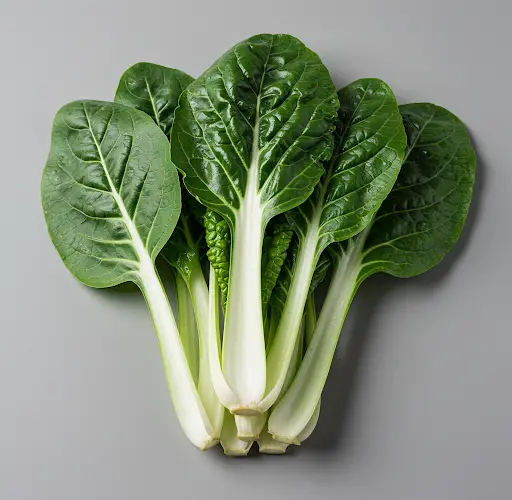In urban environments where gardening space is limited, rooftop gardening has become a fantastic solution for growing fresh, healthy vegetables. Among the many greens you can grow, Chinese chard stands out as one of the easiest and most productive leafy vegetables. Not only is it nutritious and delicious, but it also thrives in containers and raised beds, making it perfect for a rooftop setup.
With just a bit of space, some basic supplies, and sunlight, anyone can start growing Chinese chard on the rooftop to supplement their family’s meals with fresh, homegrown produce.
Why Choose Chinese Chard?
Chinese chard, often referred to as “green chard” or “Asian chard,” is a hardy leafy vegetable with broad, green leaves and thick, juicy stalks. It’s closely related to Swiss chard but typically has a milder flavor and grows quickly under the right conditions.
Here are a few reasons why Chinese chard is ideal for rooftop gardening:
-
Fast-growing and productive – Regular harvesting encourages regrowth, providing a continuous supply.
-
Nutrient-dense – Rich in vitamins A, C, and K, along with calcium, iron, and fiber.
-
Tolerant of heat and variable conditions – A great fit for sunny rooftops.
-
Adaptable to containers or beds – Grows well in both soil and water-based systems.
Preparing Your Rooftop Garden
Before planting, ensure your rooftop space is suitable for gardening. You’ll need:
-
Adequate sunlight – At least 5–6 hours of direct sunlight per day.
-
Water source – Access to water for regular irrigation.
-
Safety – Ensure the roof is strong and waterproof, and take measures to prevent soil or water run-off.
Use raised beds, large pots, grow bags, or recycled containers such as buckets and crates. Just make sure containers are deep enough (about 8–10 inches) and have good drainage.
Soil and Fertilizer
Chinese chard grows best in loose, well-draining soil rich in organic matter. Prepare your soil using the following mix:
-
50% garden soil or topsoil
-
30% compost or aged manure
-
20% sand or coconut coir for improved drainage
For better growth, mix in an organic fertilizer like bone meal or vermicompost before planting. Chard is a leafy crop, so nitrogen-rich fertilizers will help promote lush foliage.
Planting Chinese Chard
You can grow Chinese chard from seeds or transplants. If using seeds:
-
Soak seeds for 4–6 hours in water before sowing to speed up germination.
-
Plant seeds ½ inch deep in moist soil, spaced 4–6 inches apart.
-
Cover lightly with soil and water gently.
-
Seeds will germinate in 5–7 days under warm conditions.
-
Thin seedlings if needed, allowing about 8–10 inches between mature plants.
If starting with transplants, simply dig small holes and plant them at the same depth as they were in their nursery pots.
Caring for Rooftop Chinese Chard
Chinese chard is low-maintenance and forgiving, making it ideal for beginner gardeners.
-
Watering: Keep the soil consistently moist but not soggy. During hot weather, water early in the morning or late in the afternoon.
-
Fertilizing: Feed every 2–3 weeks with compost tea or a balanced liquid organic fertilizer.
-
Mulching: Add a layer of straw, leaves, or dry grass around the plants to retain moisture and suppress weeds.
-
Pest control: Chinese chard rarely suffers from serious pest issues, but keep an eye out for aphids and caterpillars. Use natural remedies like neem oil or garlic spray if needed.
Harvesting
You can begin harvesting chard leaves as soon as they reach 6–8 inches in length—typically within 30–40 days of planting. Use scissors or pinch off the outer leaves, leaving the center of the plant intact so it can continue to grow.
Regular harvesting encourages the plant to produce more leaves. A single planting can provide multiple harvests over several months.
Using Chinese Chard in the Kitchen
Chinese chard is a versatile green that can be used in a variety of dishes:
-
Stir-fried with garlic and soy sauce
-
Added to soups, broths, and noodle dishes
-
Sautéed with other vegetables as a side dish
-
Mixed into omelets or rice dishes
Its mild flavor and tender texture make it suitable for both cooked and raw preparations.
Final Thoughts
Growing Chinese chard on the rooftop is an easy and practical way to bring fresh, healthy vegetables into your home. It’s ideal for families who want to be more self-sufficient, reduce grocery costs, and enjoy the satisfaction of harvesting their own food—even in limited space.
Whether you have a large rooftop terrace or a small flat area above your home, a few containers of chard can go a long way toward feeding your family. With minimal investment and basic care, you’ll be surprised how much you can grow, right above your head.



